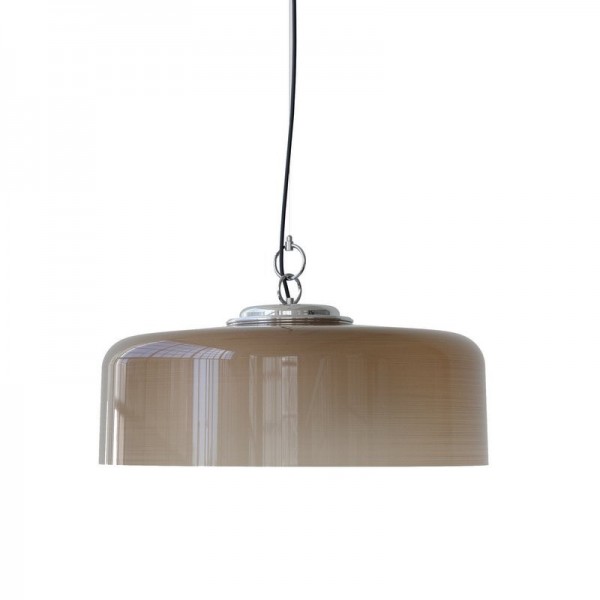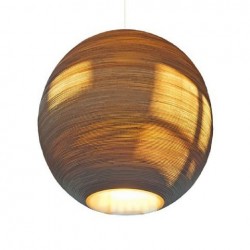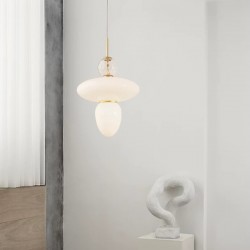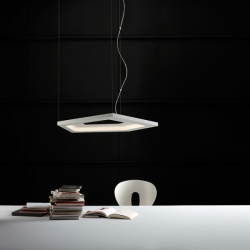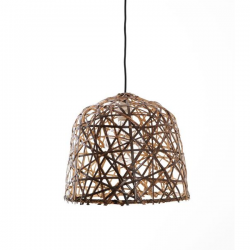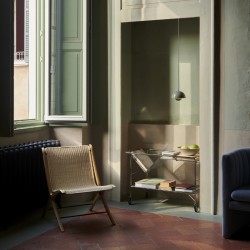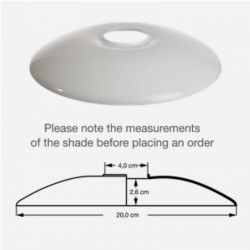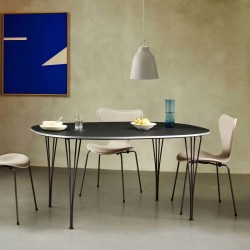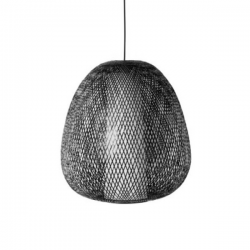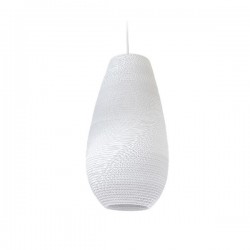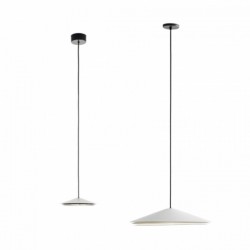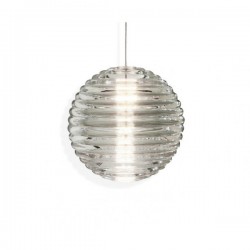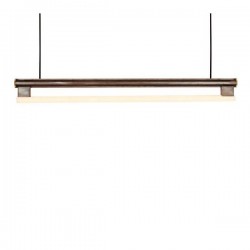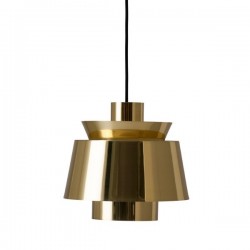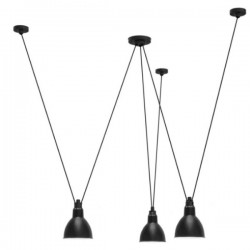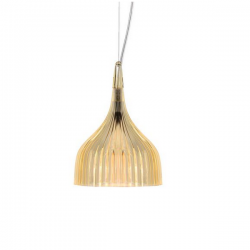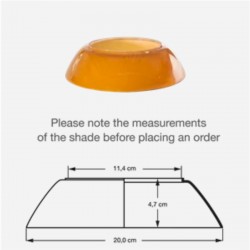
In 1963, Franco Albini and Franca Helg started experimenting with plastics in lighting for Arteluce. Summoned by Gino Sarfatti to research the possibilities that new technologies and materials were providing, the two designers came up with a suspension lamp that summed up the two souls of the Arteluce brand: the love for glass, which they used for the opal diffuser, and the daring use of methacrylate, a (then new) lighter and more resistant material, perfect to interpret modernity by combining craftmanship and industry.
With the re-edition of this iconic lamp, Astep continues its work of rediscovery of great Italian masters of light while also pursuing the same pioneering spirit in materials research that animated Albini, Helg and Sarfatti. It does so by bringing environmental sensitivity into the equation through using Green Cast, a material that is 100% recycled and recyclable, patented and made in Italy, featuring identical properties of classic methacrylate. With its brushed finish, the Green Cast used for the new 2050 diffusor restores a timeless elegance. For Astep sustainability is also about guaranteeing performance and aesthetics.
- Specifications
Materials Opaline Glass Diffuser, Methacrylate Diffuser, Steel Structure
Light Source 1 × E27 LED 11W (11W Max) 1521lm 2700K
Complimentary Bulb Included- Size Description
∅ 590 × 296mm
Installed Height 1250mm
Diffuser Diameter ∅ 590mm
Weight 5.25kg
-
Franco Albini
Franco Albini was a major figure in the Rationalist Movement, excelling in architectural, furniture, industrial and museum design. After receiving a degree in architecture from the Politecnico di Milano in 1929, he worked with the Ponti and Lancia design studios. His work for the magazine Casabella also played a key part in his development, marking his conversion to the Rationalist Movement and his becoming its spokesman on the Italian cultural scene. When he set up his own practice in Milan in 1931, he took on the challenge of workers’ housing and continued in this vein after the war, thanks to the opportunities offered by the reconstruction projects he worked on with Franca Helg from 1952. During the 1940’s, Albini expanded his collaboration with Cassina, which started with chair designs that paved the way for his signature style.

Related products



 EUR
EUR


